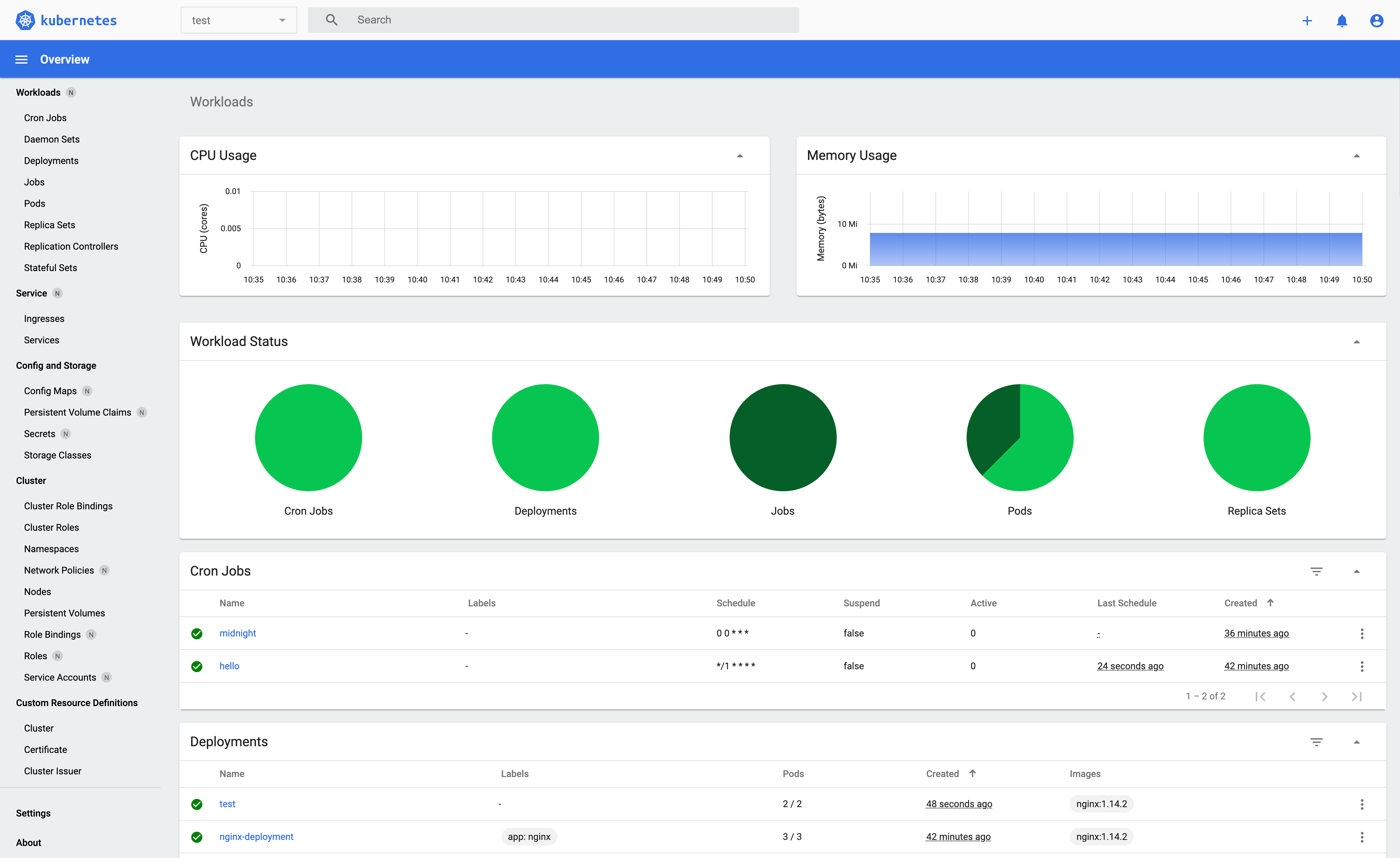哈喽,分享一个使用docker run或docker-compose部署k8s dashboard的方法,方便大家快速部署k8s dashboard, 而不用必须在k8s集群内部部署dashboard pod, 个人感觉很简洁和直观,尤其便于初学者熟悉和理解k8s dashobard命令的启动参数,也便于灵活修改启动参数。
docker run方式运行:
docker run \
-d --restart=always \
-v "${HOME}/.kube/config":"/home/user/.kube/config" \
-p 8080:9090 \
-p 8443:8443 \
-e K8S_DASHBOARD_KUBECONFIG=/home/user/.kube/config \
-e K8S_OWN_CLUSTER=false \
--name dashboard kubernetesui/dashboard:latest /dashboard --insecure-bind-address=0.0.0.0 --bind-address=0.0.0.0 --kubeconfig=/home/user/.kube/config --enable-insecure-login=false --auto-generate-certificates --enable-skip-login=false
docker-compose方式运行:
version: "3"
services:
dashboard:
restart: always
image: kubernetesui/dashboard:latest
volumes:
- ~/.kube/config:/home/user/.kube/config
ports:
- 8080:9090
- 8443:8443
environment:
- K8S_DASHBOARD_KUBECONFIG=/home/user/.kube/config
- K8S_OWN_CLUSTER=false
entrypoint:
- /dashboard
- --insecure-bind-address=0.0.0.0
- --bind-address=0.0.0.0
- --kubeconfig=/home/user/.kube/config
- --enable-insecure-login=false
- --auto-generate-certificates
- --enable-skip-login=false
重要: 由于k8s社区dashboard项目的某一个维护者对社区开发人员态度一贯不友好,不经讨论就关闭这个容器相关的合入PR, 我就分享在自己的一亩三分地供大家使用,希望对大家有所帮助~
Important: Since one maintainer(just one) of the k8s community dashboard project has always been unfriendly to developers, the related merged PR about running with docker have been closed without discussion. I share it here for everyone to use. Hope it will be helpful to you~
Kubernetes Dashboard is a general purpose, web-based UI for Kubernetes clusters. It allows users to manage applications running in the cluster and troubleshoot them, as well as manage the cluster itself.
IMPORTANT: Read the Access Control guide before performing any further steps. The default Dashboard deployment contains a minimal set of RBAC privileges needed to run.
To deploy Dashboard, execute following command:
kubectl apply -f https://raw.githubusercontent.com/kubernetes/dashboard/v2.5.0/aio/deploy/recommended.yamlAlternatively, you can install Dashboard using Helm as described at https://artifacthub.io/packages/helm/k8s-dashboard/kubernetes-dashboard.
To access Dashboard from your local workstation you must create a secure channel to your Kubernetes cluster. Run the following command:
kubectl proxyNow access Dashboard at:
To find out how to create sample user and log in follow Creating sample user guide.
NOTE:
- Kubeconfig Authentication method does not support external identity providers or certificate-based authentication.
- Metrics-Server has to be running in the cluster for the metrics and graphs to be available. Read more about it in Integrations guide.
Dashboard documentation can be found on docs directory which contains:
- Common: Entry-level overview.
- User Guide: Installation, Accessing Dashboard and more for users.
- Developer Guide: Getting Started, Dependency Management and more for anyone interested in contributing.
Learn how to engage with the Kubernetes community on the community page.
You can reach the maintainers of this project at:
Learn how to start contribution on the Contributing Guideline.
Participation in the Kubernetes community is governed by the Kubernetes Code of Conduct.
Copyright 2019 The Kubernetes Dashboard Authors


